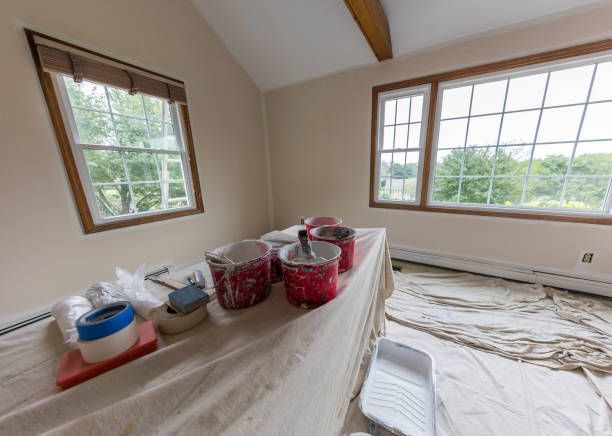How to Get Rid of Paint Smell in Your Home
If you've ever painted your home, you know that the smell of paint can be pretty strong. And if you're not careful, that smell can linger in your home for weeks or even months. In this blog post, we will discuss how to get rid of bad paint smell in your home. We will cover a few different methods, so you can choose the one that works best for you!
1. Ventilation is key - open up all the windows and doors to allow fresh air in

If you've ever opened up a can of paint only to be greeted by a noxious paint smell, you know how important it is to have good ventilation while painting. Not only are the fumes from paint unpleasant, but they can also be harmful to your health. That's why it's important to open up all the windows and doors in your home before starting any painting project. The fresh air will help to dissipate the fumes and clear the air. In addition, be sure to wear a mask and gloves to protect yourself from exposure.
2. Place a bowl of vinegar or baking soda near the source of the smell
If you've ever walked into a freshly painted room and been greeted by the strong smell of paint fumes, you know how unpleasant it can be. Although the fumes are not harmful, they can be incredibly overwhelming, making it difficult to breathe or focus on anything else. If you're dealing with this problem, there are a few simple things you can do to help mitigate the paint odor. One is to place a bowl of vinegar or baking soda near the source of the fumes. The bowl will help to absorb some of the airborne particles, reducing the strength of the smell. In addition, try opening a window or running an air purifier to help circulate fresh air and reduce the concentration of fumes in the room. With a little effort, you should be able to make your space much more bearable.
3. Use a fan to get rid of paint smells of few hours
It's always annoying when you're trying to enjoy a new coat of paint, but the fumes are just too strong. If you're looking for a way to get rid of that bad paint smell quickly, then circulating the air around the room with a fan is a great solution. The fan will help to disperse the fumes evenly, so that they're not concentrated in one area. Plus, the movement of the air will also help to evaporate any residual paint fumes, so that the room smells fresh and clean again. Just be sure to keep the fan on for at least an hour or two after you finish painting, to ensure that all of the fumes are gone.
4. Try using an essential oil like lavender or lemon to cover up the paint smell
Anyone who has ever painted a room knows that the fumes can be overwhelming. Even if you open all the windows and doors, the smell of paint can linger for days. If you're looking for a way to get rid of the bad paint smell quickly, try using an essential oil. Lavender and lemon are both great choices - just add a few drops to a diffuser and enjoy the fresh scent. You can also add a few drops to a bowl of water and place it in the room to help absorb the fumes. In no time at all, your room will smell fresh and new again.

5. Call in a professional to help get rid of the bad paint smell for good
Chances are, if you're a homeowner, you've experienced the bad paint smell. It's that noxious odor that seems to linger long after the paint job is complete. The good news is that there are ways to get rid of it for good. The first step is to identify the source of the problem. If the bad paint smell is coming from newly painted walls, then it's likely due to VOCs (volatile organic compounds). These are chemicals that are released into the air as the paint dries and can be harmful to your health. The best way to remove VOCs from the air is to invest in an air purifier with a HEPA filter. This will help to remove 99% of airborne particles, including VOCs. If the bad paint smell is coming from old paint, then it's likely due to mildew or mold growth. In this case, you'll need to call in a professional to help get rid of the problem. They'll be able to identify the source of the problem and treat it accordingly. With their help, you can finally say goodbye to that bad paint smell for good.
6. Use a dehumidifier to reduce the amount of moisture in the air
Dehumidifiers work by reducing the amount of moisture in the air, which can help to remove the VOCs (volatile organic compounds) that are responsible for the bad smell. In addition, dehumidifiers can also help to prevent mold and mildew growth, both of which can cause serious health problems. So, if you're looking for a way to get rid of that pesky paint smell, consider investing in a dehumidifier.
7. Slice up some few lemon slices and place them in bowls throughout the house
If you're painting your house and want to get rid of the fresh paint fumes, you may have heard that placing bowls of vinegar around the room will do the trick. But did you know that citrus fruits can also be effective at absorbing bad smells? Just slice up a lemon or lime and place the pieces in bowls around the room. The citrus smell will help to neutralize the paint fumes, leaving your home smelling fresh and clean. Plus, you'll get to enjoy the refreshing scent of lemons or limes as you work!
You might also like

Book A Service Today


